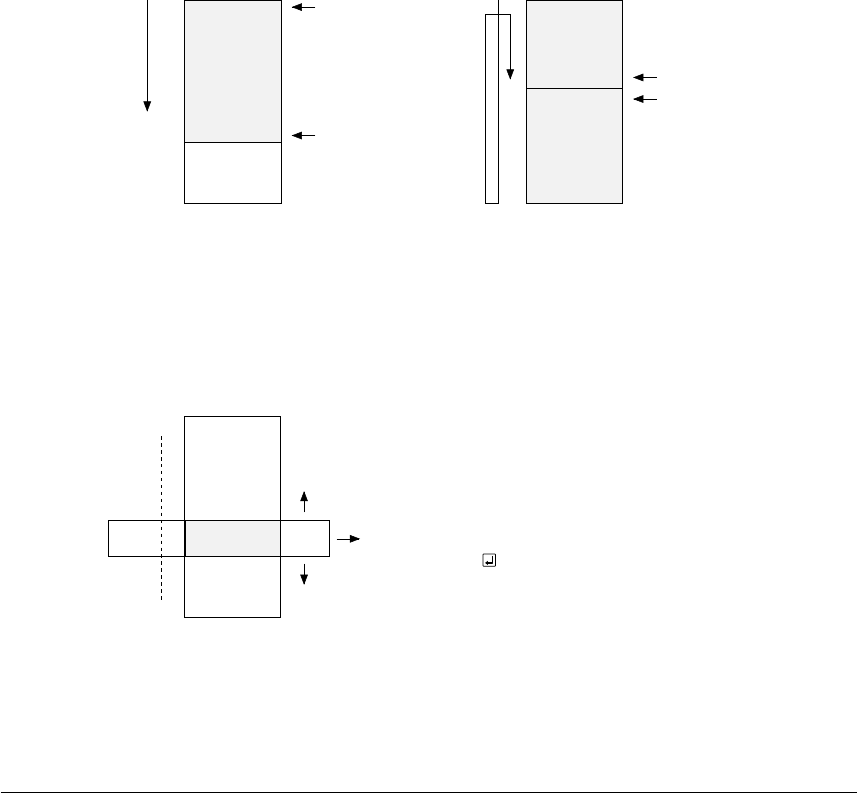
ICE CONTROL SOFTWARE ICS62XX
VIII-14 EPSON S1C62 FAMILY
DEVELOPMENT TOOL REFERENCE MANUAL
2.3.6 Target interrupt and break
When a target interrupt occurs the moment of a break it is given priority over the break. The break is then
induced after the interrupt process is stacked. Next, the interrupt routine is executed from the top when the
run mode commences.
The PC displayed during a break is the top interrupt address.
When a break is set by the BR command with FI=1, the break and interrupt are generated simultaneously,
but due to the interrupt process, the register values after the break are:
*PC=0000 A=.... F=.DZC X=000 Y=010
|
FI reset
so as to reset the FI flag status.
2.3.7
History function
The evaluation board CPU information (PC, instruction code, RAM data address and data content, and
CPU internal registers) while running an emulation are fetched to the history memory region with each
CPU bus cycle. The history memory has a capacity of 8291 cycles, and can store 2730 (5 clock instructions
only) to 1365 (12 clock instructions only) new instructions executed by the evaluation board.
Fig. 2.3.7.2 History data display
Fig. 2.3.7.1 History function diagram
Figure 2.3.7.1 shows a diagram of the history function. When the history memory is filled, old data is
overwritten by new data.
The history pointer (HP) normally displays the oldest instruction at position 0, but during a break it
displays the newest instruction. The maximum value of the HP is about 2730 when 5 clock instructions are
executed.
Space
History memory
Effective
history
Program
execution
Oldest instruction
(HP=0)
Instruction
immediately
prior to break
(HP=700)
History memory
Effective
history
Oldest instruction
(HP=0)
(HP=2730)
Instruction
immediately
prior to break
Effective
history
Newest
instruction
History data
Oldest
instruction
HP=0
The HP can display optional positions via the H, HB,
and HG commands.
HP data from 1980 to 1986 is displayed by entering:
#H, 1980, 1986
HP=2700


















